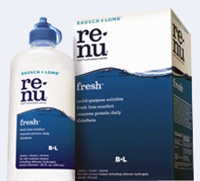Canada’s Valeant in talks to buy Bausch & Lomb for $9 bn
25 May 2013
Canadian drug maker Valeant Pharmaceuticals International is close to finalising a deal to acquire eye care company Bausch & Lomb Holdings Inc from private equity firm Warburg Pincus, for about $9 billion, the Wall Street Journal yesterday reported, citing a person familiar with the matter.
 The move comes a few weeks after Valeant, one of the most acquisitive pharmaceutical companies, gave up on acquiring New Jersey-based generic drug giant Actavis Inc for $13 billion in cash and stock.
The move comes a few weeks after Valeant, one of the most acquisitive pharmaceutical companies, gave up on acquiring New Jersey-based generic drug giant Actavis Inc for $13 billion in cash and stock.
The talks broke down after Actavis demanded a premium, and a few days later went on to buy Irish pharmaceutical company Warner Chilcott Plc for $5 billion (See: Actavis to acquire Irish specialty drug maker Warner Chilcott for $5 bn)
The Wall Street Journal said that a Valeant- Bausch & Lomb deal might come as soon as next week.
In December 2012, Bloomberg reported that Warburg Pincus had hired Goldman Sachs to explore a sale of Bausch & Lomb for which it expected over $10 billion.
But after having approached health-care companies such as French drug giant Sanofi, UK-based GlaxoSmithKline, US-based Merck & Co and Abbott Laboratories, Warburg Pincus in March 2013 filed documents to raise up to $100 million in an initial public offering after all the private bids fell far short of its expectations.
Warburg Pincus had taken Bausch & Lomb private in 2007 for $3.7 billion. The total deal size was $4.6 billion including debt.
Founded in 1853 by two German immigrants, John Jacob Bausch, a trained optician and Henry Lomb, who put in the finance, Bausch & Lomb is one of the world's leading suppliers of eye health products, such as contact lenses and lens care products.
The Rochester, New York-based company, which competes with Johnson & Johnson, Alcon, Allergan, MSD-Chibret and Ciba Vision, is also one of the oldest continually operating companies in the US.
Earlier, it also produced photographic lenses, spectacle lenses, microtomes, binoculars and telescopes, optical lenses, eyeglasses, microscopes, binoculars, projectors, camera lenses, camera diaphragms, and also produced the lenses for cameras which captured the first satellite images of the Moon.
Its biggest blunder was selling the popular Ray-Ban brand of sunglasses in 1999 to Italy's Luxottica Group.
In 2007, eye products maker Advanced Medical Optics (AMO) had made a $75-per share or $4.3 billion bid for Busch & Lomb, but had to withdraw after opposition from its largest shareholder, ValueAct Capital, which held 14.7-per cent stake in AMO.
After going private, the company was hit by a recall of its ReNu with MoistureLoc contact lens solution which was found to be be contaminated due to fungal infections. Bausch & Lomb paid about $250 million to settle 600-plus lawsuits linked to the infection known as Fusarium keratitis.
In March 2010, Warburg Pincus hired Fred Hassan, former chairman and CEO of Schering-Plough, as the new chairman of Bausch & Lomb, and Brent Saunders, former president of Global Consumer Health at Schering-Plough, as the new CEO.
Hassan is known for deal making in the health-care industry. He was the prime mover in the 2000 acquisition of Monsanto Co by Pharmacia & Upjohn for $37 billion, and three years later sold Pharmacia to drug giant Pfizer for $58 billion.
He also headed Schering-Plough when it was sold to Merck for $41 billion in 2009.
Since joining Bausch & Lomb, Hassan has expanded the company through acquisitions. He was the architect of two deals done last year, which includes Germany's eye laser firm Technolas Perfect Vision GmbH and Ista Pharmaceuticals, the third-largest branded prescription eye care company in the US.
Valeant had tried to buy ISTA in a hostile bid, (See: Valeant Pharmaceuticals raises offer for opthalmic drugs maker ISTA)withdrew its $327 million sweetened bid, citing lack of progress on the deal.
Bausch & Lomb posted a net loss of $68.3 million in 2012 on revenue of $3.04 billion. It had a loss of $123.9 million on revenue of $2.85 billion in 2011.
Valeant, which was formed through the 2010 merger between Canada's Biovail Corp and US-based Valeant Pharmaceuticals, has a portfolio of about 490 products, and has two drugs in the top 200 by sales in the US. Its main markets are in the US, Canada, Mexico, Brazil, Europe and Australia.
The Ontario-based company has made over 60 acquisitions since 2008. Its latest was done in March when it offered to buy Obagi Medical Products Inc, for about $344 million in order to boost its dermatology and plastic-surgery business.
With a market cap of $22.4 billion and annual revenues of $3.5 billion, Valeant also has a ophthalmic division, which was boosted with recent acquisitions done in 2012.
The company added two ophthalmic brands, Lacrisert for the treatment of moderate to severe dry eye syndrome, and Timoptic solution in Ocudose dispenser, for the treatment of high eye pressure in patients with glaucoma.
Valeant also added Macugen for the treatment of wet age-related macular degeneration, and Visudyne, the first therapeutic treatment approved worldwide for certain forms of wet age-related macular.
Valeant Ophthalmics is now focusing on three major therapeutic categories in eye care, glaucoma, dry eye and retina.
The proposed Bausch & Lomb deal would give Valeant its well-known contact lenses, drugs to treat eye conditions such as glaucoma, pharmaceuticals, intraocular lenses and other eye surgery products.













.jpg)






.jpg)









